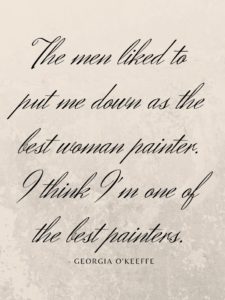
Raise your hand if you have ever been on an artwalk. Good. Now tell me: why are trans and queer artist of color, people with no BA’s, and people with disabilities left out of the picture, or not pushed to the forefront? Because the gallery owners are either rich, white, or male. Here are three galleries that are redefining the art world for the better with owners who are not rich, white, or male.
One of these art galleries is on the other side of the world, in the thriving metropolis of London. The gallery is called Sid Motion, which is also the name of the gallery owner and curator. The gallery opened up back in June 2016 with the intent “to bring a range of fresh vibrant artists working in different media to this new gallery space” as stated on the gallery’s website. For example, for her opening show she chose to exhibit a group of unsigned artists in the UK who work in various mediums. Her shows range from solo shows to two-woman show and group shows. She presents a spectrum of artists from the established artists to lesser known and difficult-to-track-down artists. These exhibitions “aim to introduce a forum for conversation, education and development.”
Back on the West Cost, there is the Ori Gallery that “seeks to reclaim and redefine ‘the white cube’ through amplifying the voices of Trans and Queer Artists [sic] of color, community organization and mobilization through the arts”, as stated on the gallery’s website. Co-directors Maya Vivas (ceramic/performance artist) and Leila Haile (tattooer and community organizer) are not fazed by “limiting” those who can participate in the space. The most marginalized identity is being reflected and, unlike most galleries, they are being direct about it. Since they opened last February the gallery has been seen eight exhibitions that directly connect back to the gallery’s goal. So far, the gallery has done group exhibitions such as Emergent, which featured eleven young queer /trans /artists of color and two-person exhibitions such as Linoleum Flowers . These exhibitions show the work as is and leave the “diversity representation” behind which connects to one of the gallery’s goals to “hold institutional power.”
Finally, the Wolff Gallery, run by Shannon O’Connor and Zemie Barr (visual artist themselves) seeks to “broaden the Portland art scene by prioritizing the exhibition of work by traditionally underrepresented artists.” These include exhibitions that focus on being “dedicated to a feminist, collaborative organizational model.” This means “rejecting certain things women have been told to believe.” Their grand opening, Now I am Myself exemplified this specifically through five female photographers, and focused on eliminating the male gaze and leaving the viewer with non-sexualized subjects. The five artists used softness and vulnerability in their works to shift the narrative and communicate strength.
As you can see, these newfound galleries challenge the status quo and make the viewer question society as a whole. These types of independent galleries are being brought to the forefront to instill curiosity and thought in this chaotic world. Therefore, the world is in a dawn and it is up to the owners/directors of these galleries to make a difference in society.
Notable Mentions:
Access Gallery
Medium Tings
Works Cited:
Skidmore, Maisie. (2016, October 10) A Beginner’s Guide to Opening an Art Gallery. http://www.anothermag.com/artphotography/9154/abeginnersguidetoopeninganartgallery
McCann, Fiona. (2018, January 30). A New North Portland Gallery Gives Space to Queer and Trans Artists of Color. https://www.pdxmonthly.com/articles/2018/1/30/ anewnorthportlandgallerygivesspacetoqueerandtransartistsofcolor
Rabin, Jennifer. (2016, April 12). Now One Called Koons “Masculinist Art”.
https://www.wweek.com/arts/2016/04/12/noonecalledkoonsmasculinistart/
Rabin, Jennifer. (2016, September 6). Portland’s Newest Gallery Is Only Representing Female Artists. Rabin, Jennifer. (2016, September 6). Portland’s Newest Gallery Is Only Representing Female
Artists. https://www.wweek.com/arts/2016/09/07/portlands-newest-galleryis-only-representing-female-artists/
